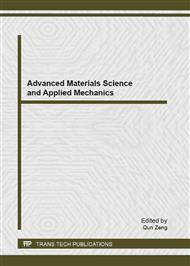p.31
p.37
p.44
p.51
p.56
p.62
p.68
p.74
p.79
Synthesis of Mesoporous V-TiO2 with Different Surfactants: The Effect of Surfactant Type on Photocatalytic Properties
Abstract:
Mesoporous vanadium doped titania (V-TiO2) photocatalyst was synthesized with the use of a new surfactant (Gemini) for the first time. In order to investigate the surfactant effect on the photocatalytic activity of catalysts, different surfactants containing Gemini, pluronic F127, pluronic P123, CTAB, Hexadecylamine and PEG 6000 were used in the preparation of mesoporous V-TiO2 photocatalyst as a templating agent. The catalysts were characterized by FT-IR, XRD, SEM, EDX, nitrogen adsorption-desorption isotherm, and DRS. The nanosized V-TiO2 with Gemini surfactant (V-TiO2(G)) exhibited the highest visible light driven photocatalytic efficiency for degrading MO dye. The results showed that the surfactant type played an important role on the structure and photocatalytic activity of the samples.
Info:
Periodical:
Pages:
56-61
Citation:
Online since:
May 2013
Price:
Сopyright:
© 2013 Trans Tech Publications Ltd. All Rights Reserved
Share:
Citation:


